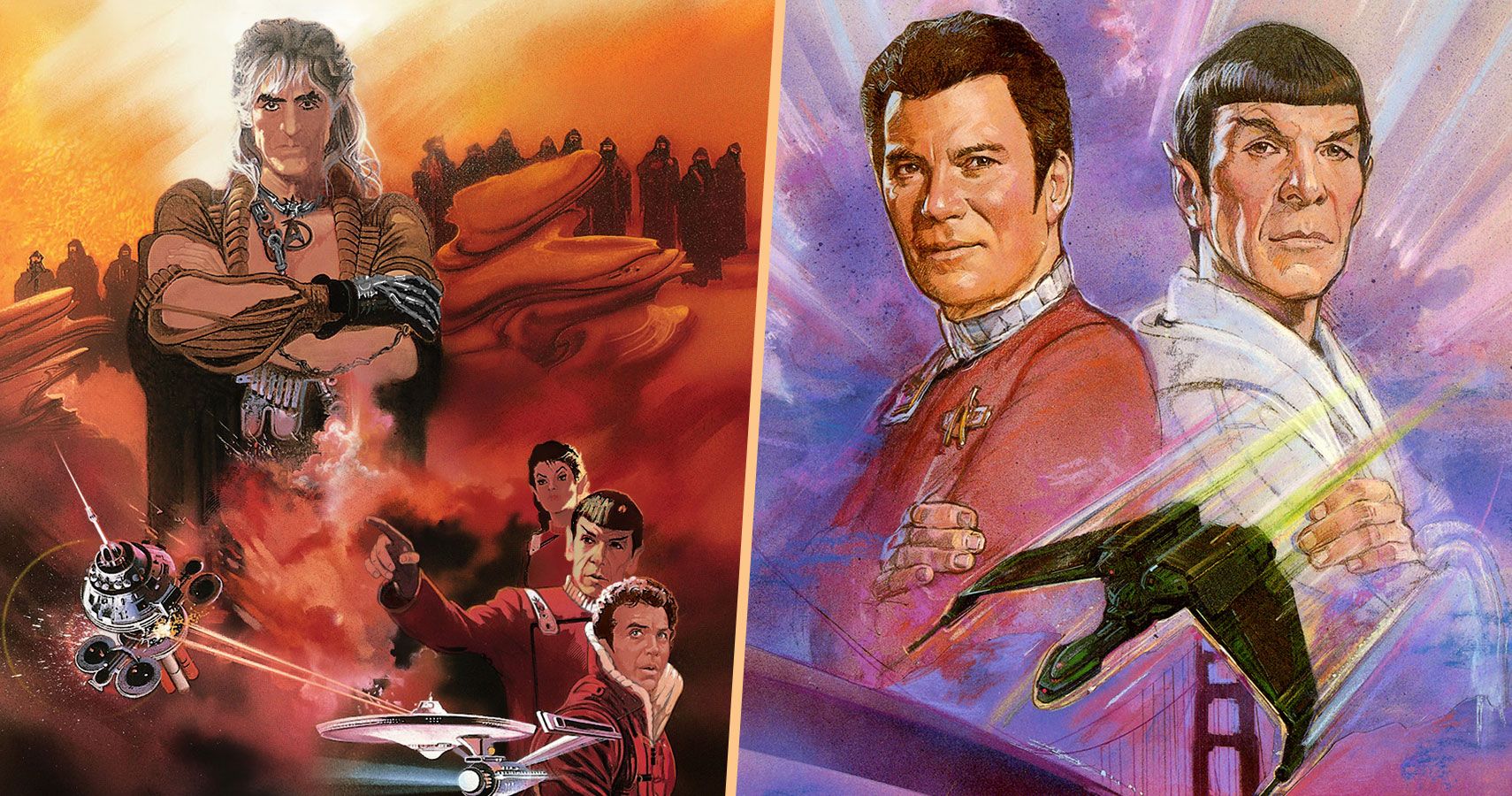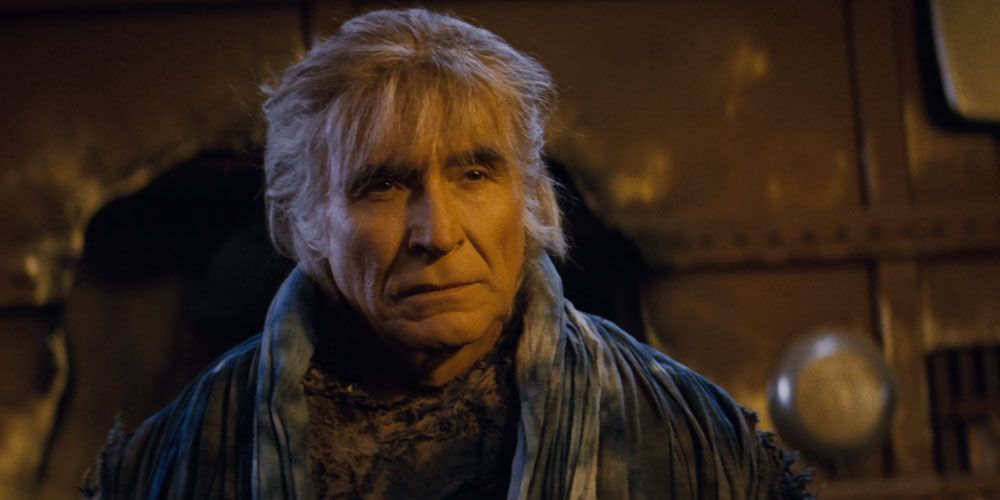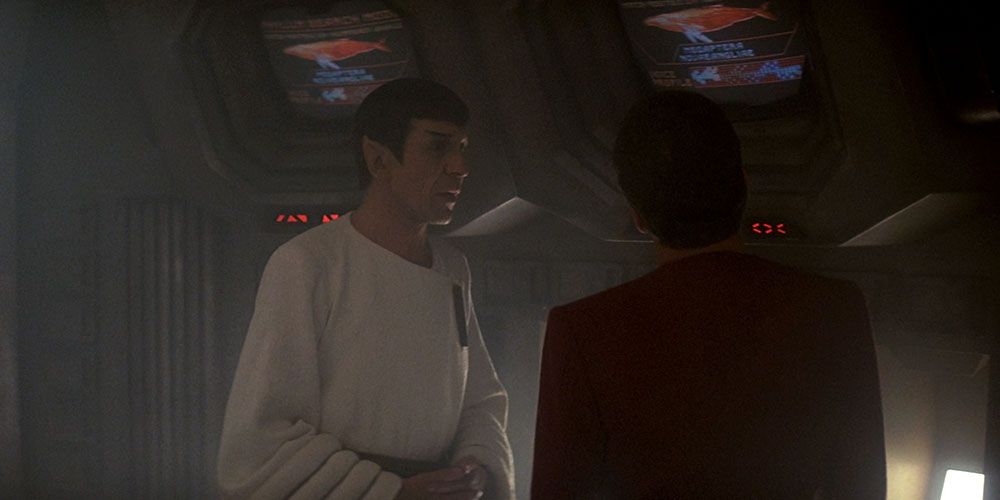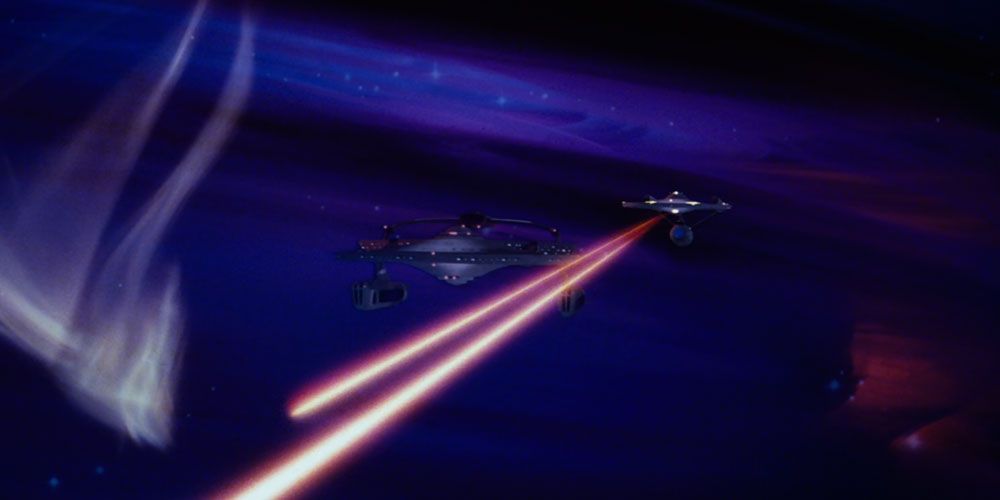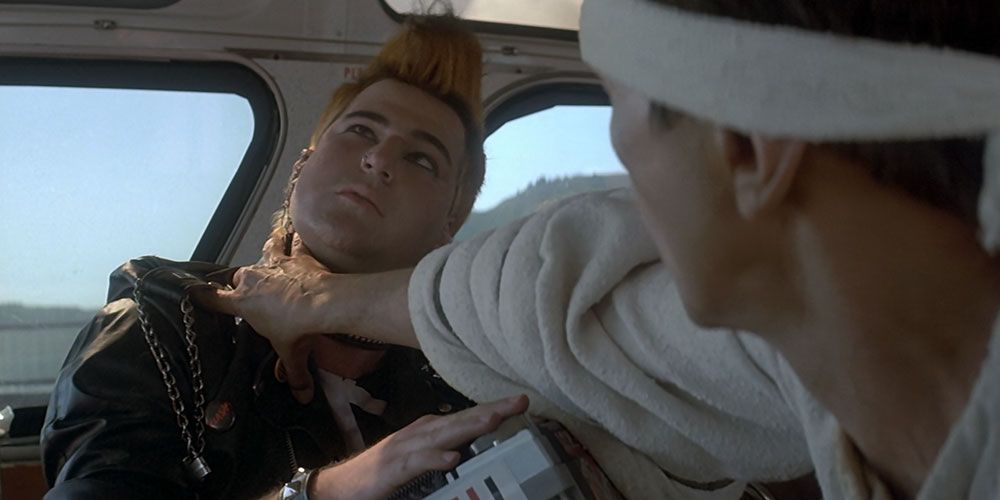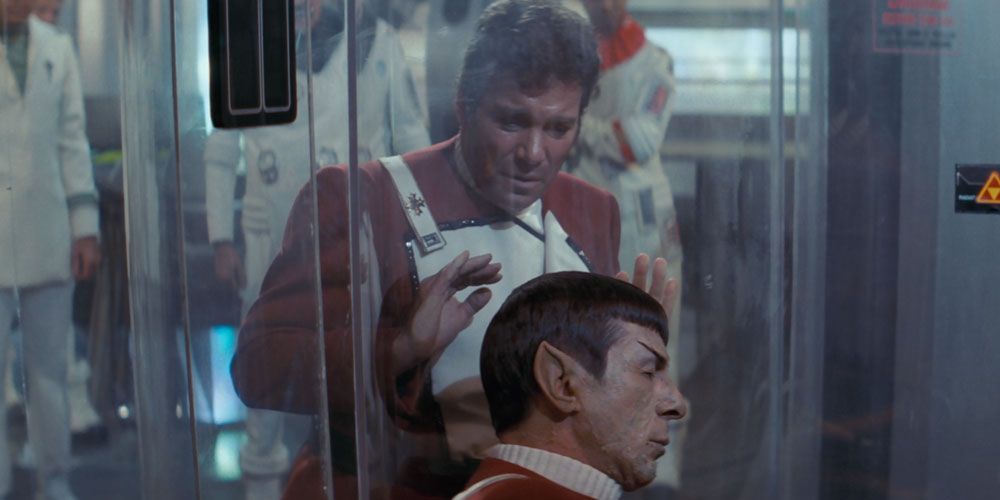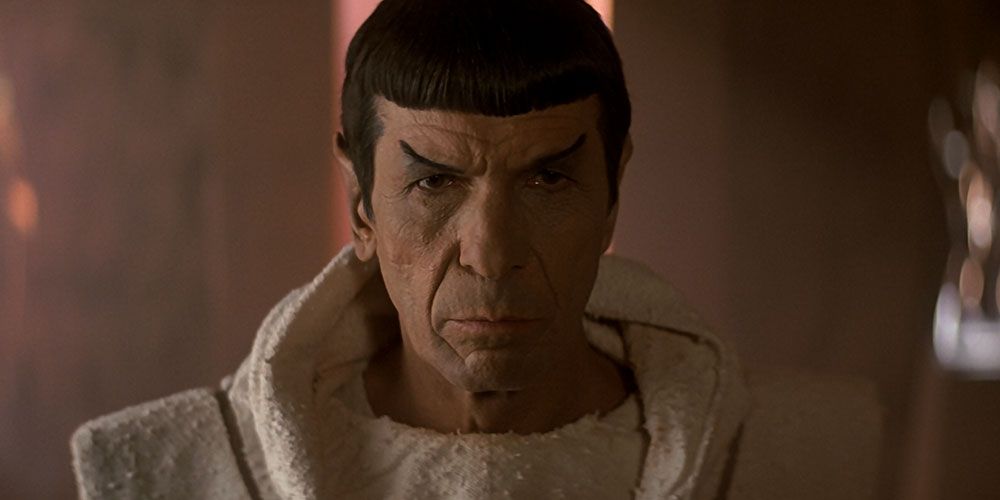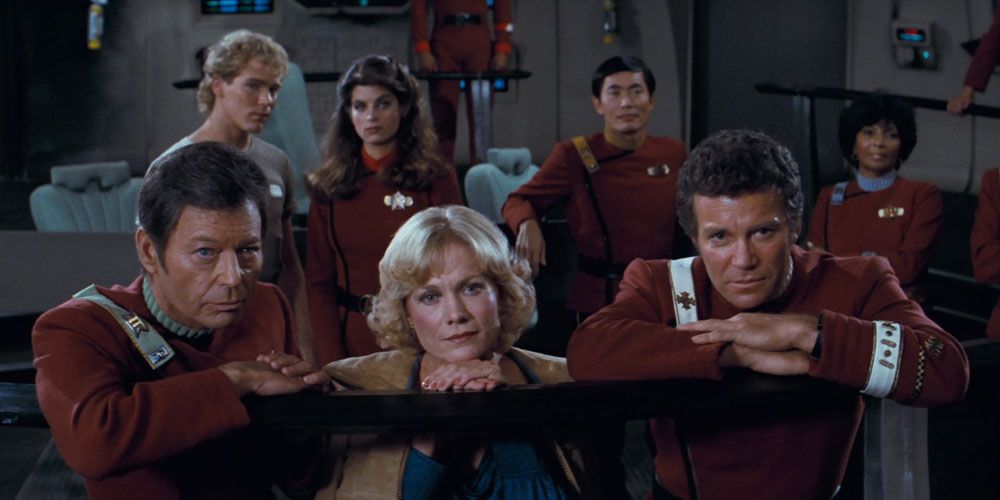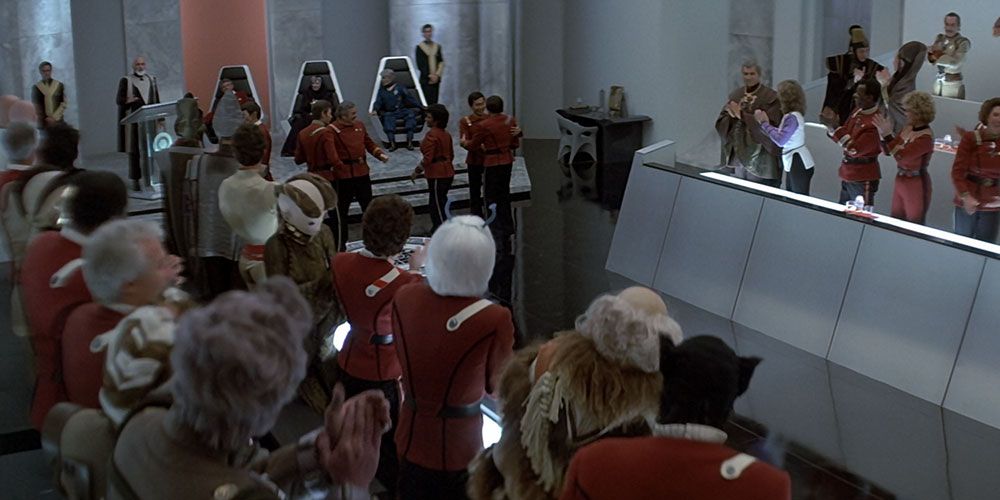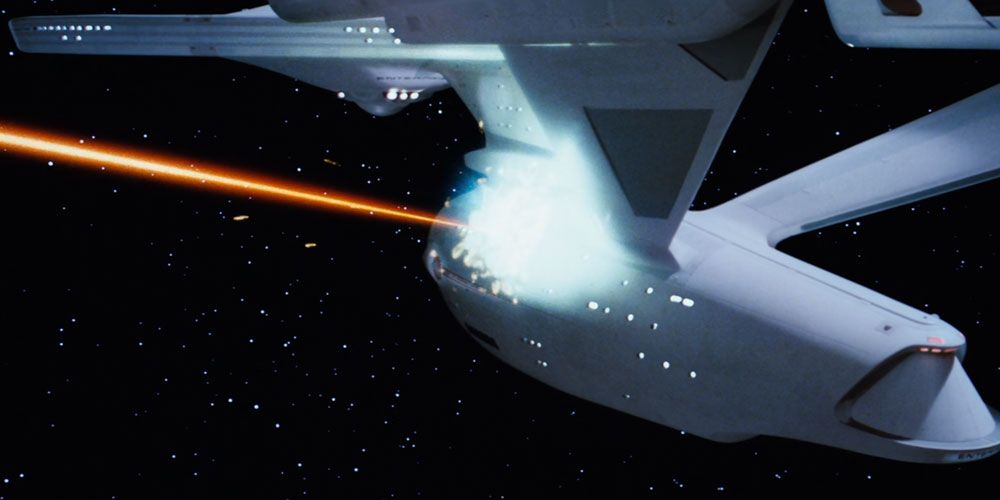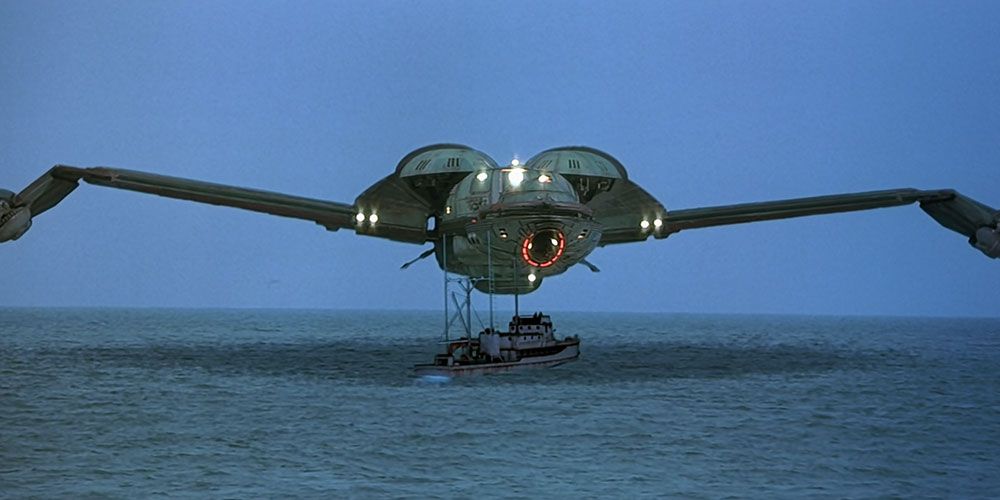Star Trek II: The Wrath Of Khan and Star Trek IV: The Voyage Home have battled it out over the last few decades for the title of the best classic Trek film, and there's still no clear victor. It's not hard to imagine why, either. Both films are cinematic triumphs and sci-fi masterpieces, but for very different reasons. While Wrath Of Khan was essentially a nail-biting submarine action film set in space, The Voyage Home was a lighthearted comedy with strong social messaging.
Both films continue to be fan favorites, making them winners in their own right, but that's no reason to refrain from pitting these two Trek titans against one another. There are 5 reasons why Wrath Of Khan could theoretically claim the crown, and 5 why The Voyage Home can steal the win.
The Wrath Of Khan Had The Perfect Villain
It's hard to top Khan when it comes to Star Trek villains. The character made his original appearance in the first season of the Star Trek original series, in 1967. He would go on to remain one of the coolest, most charismatic and dangerous foes Kirk ever encountered. The final act of the episode saw Kirk giving Khan and his people a fighting chance, by exiling them onto the planet Ceti Alpha Five.
This set the stage for his return in The Wrath Of Khan, which revealed that Ceti Alpha Five had been turned into an inhospitable wasteland following the destruction of its nearby sister planet. It was the perfect justification for vengeance against Kirk, whose decisions regarding Khan's fate would definitely come back to haunt him.
The Voyage Home Had The Perfect Message
Both Star Trek II and Star Trek III had taken the series in a dark direction. The events of the former led to the death of Spock and several crew members, not to mention the lost crew of the Reliant, and the slaughter of Regula 1's scientific team. Star Trek III: The Search For Spock would incur a bleak tone throughout its entire running time, with only the end offering a glimmer of hope.
The Voyage Home needed to lighten things up a bit, and it did so by featuring a film with no fight sequences, ship-to-ship battles or nefarious villains to vanquish. Instead, it was a light-hearted romp through time, all for the sake of a noble cause - saving two Humpback Whales from death, who would later go on to save the planet Earth from annihilation by a mysterious alien probe.
The Wrath Of Khan Was A Combat Film
Khan's campaign of vengeance against Kirk and the Enterprise crew was the perfect catalyst for a lot of excellent action scenes. The initial exchange of weapons fire quickly handicapped both ships, allowing director Nicholas Meyer to masterfully construct a series of clever and imaginative battle sequences, including a cat and mouse game in the Mutara Nebula.
The film took all the best elements of submarine epics, and changed the setting to outer space. This resulted in white knuckle tension for audiences who enjoyed watching these two strategic minds outflank each other.
The Voyage Home Was A Comedy
Star Trek had always incorporated comedic elements into its material, but The Voyage Home was the first time the franchise had embraced full-on comedy. It proved to be a massive payoff, turning the movie into perhaps the most charming Trek film ever made.
Whether it's watching Spock's confusion regarding exact change for the bus, or Kirk talking about "L.D.S.," the laughs are plentiful and non-stop. The Enterprise crew are the ultimate fishes out of water as they struggle to figure out the hustle and bustle of 1980's San Francisco, much to our enjoyment.
The Wrath Of Khan Featured Spock's Death
It was important for Star Trek II to show some sort of consequence for Kirk's decision to exile Khan to Ceti Alpha Five, and the death of Spock seems fitting. In fact, the transition between the original episode "Space Seed" and Wrath Of Khan is so good, that one gets chills watching the former.
The death of Spock was supposed to be permanent, but actor Leonard Nimoy wasn't ready to give the character up, taking up directorial duties for the next film which brought the character back. Nevertheless, Star Trek fans were in uproar over the initial decision, which is exactly what the franchise needed.
The Voyage Home Featured Spock's Return
While Star Trek III: The Search For Spock focused on Kirk and the Enterprise crew openly violating Starfleet to save the life of a resurrected Spock, The Voyage Home was forced to deal with the aftermath. Spock was essentially forced to re-learn everything all over again, and the result was a much different Vulcan than the one audiences remembered.
This Spock was almost child-like, but no less an intellectual. It was his theory regarding Humpback Whales that set the story in motion. Getting to watch him attempt to adjust to life on Earth in the 1980s was simply the icing on the cake.
The Wrath Of Khan Had A Bittersweet Ending
The ending of Star Trek II wasn't completely bleak, but it was a crushing blow to fans who were forced to accept the possibility that their beloved Spock had finally been killed off. The film did offer a sense of optimism in the final scene, when Kirk and the crew marvel at the creation of the Genesis planet, and Kirk's reconciliation with his son.
Both of these elements would be destroyed in the next film, but that's neither here nor there. The Wrath Of Khan wasn't nihilistic, but it did show real-time consequences for the battle which just took place.
The Voyage Home Had An Upbeat Ending
After two very dark films featuring a number of high profile deaths, and the destruction of the newly formed Genesis planet, audiences were effectively soaked in downbeat vibes. Leonard Nimoy must have realized this when he decided to direct The Voyage Home, quickly shifting the focus to a lighthearted story.
It would also prove to pay off in the end. Not only would the Humpback Whales survive and return with Kirk and crew to the future, but they would also repopulate the species, and save Earth from certain doom. The dropping of charges against Kirk and his crew for their actions in Star Trek III, plus the demotion of Kirk to the rank of Captain (something he wanted), were reasons for fans to celebrate. The crisis had been averted. Star Trek was back!
The Wrath Of Khan Had Fantastic Action Sequences
Nicholas Meyer pulled out all the stops when it came to generating some of the best ship-to-ship battles in Star Trek history. Future films would speed up this kind of combat, which somehow detracted away from their impact. Nay, Wrath Of Khan wasn't going to take the easy way out!
The clever use of tense, exciting military-themed music, battle tactics and Starfleet procedures would prove to be a perfect mix. This film wasn't about crew members pushing buttons. It was about out-thinking one's opponent using strategy and intuition!
The Voyage Home Had A Fantastic Premise
Star Trek IV could have taken the easy way out by continuing the chronology of events in the same time period, but it didn't. The entire focus shifted to time travel back to 1980's San Francisco, to save two Humpback Whales so they could speak to an alien probe that was ravaging Earth in the future. It was, in a word, brilliant.
Not only did it get to set up one of the most outrageously funny Trek films of all time, but it also allowed the film to make a social statement to we, the audience living in modern times, all without being offensive. Classic Trek was able to do this in a way that modern-day Trek has completely failed, and it's a shame this technique has been lost over the years.

